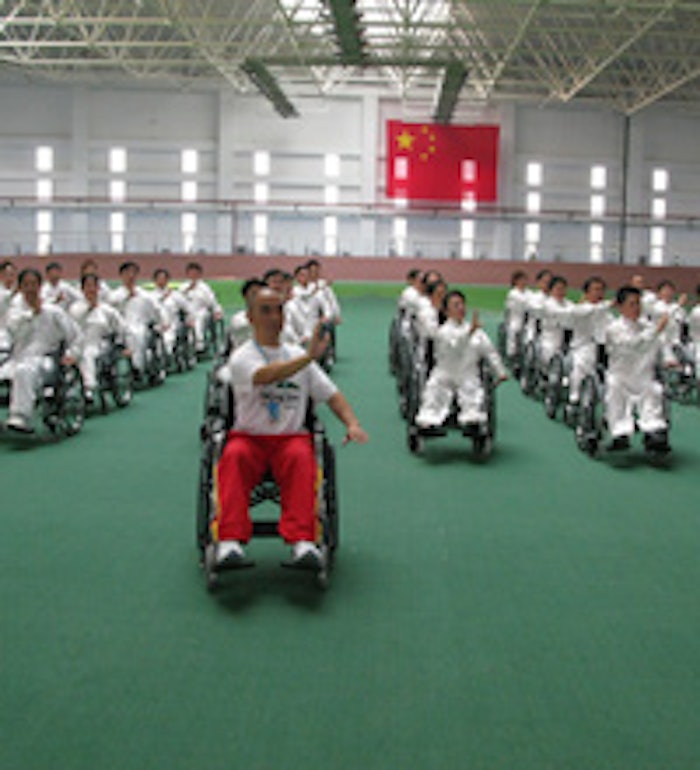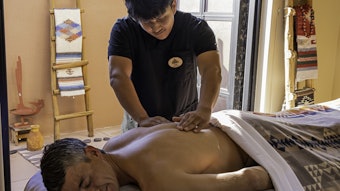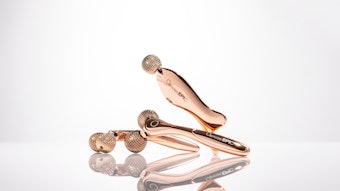
Studies overwhelmingly point to regular physical exercise as the crucial medicine for what ails Americans. Physicians have a hard time convincing even healthy patients to take action, but it’s a much harder sell for those with limited movement caused by physical disabilities. They often lack the self-confidence to begin a physical fitness plan, and it’s easy to understand why. They face transportation obstacles to visit an exercise facility. If they can get to the facility, accessing the building and equipment is often difficult or impossible, and fees are often high, says Dr. Zibin Guo, a medical anthropologist in The University of Tennessee at Chattanooga Department of Sociology, Anthropology and Geography. He says appropriate and interesting exercise is often not available to this group.
“Physical inactivity often further deteriorates the general health condition for these individuals, and it also tends to make them more reliant on professional medical care rather than taking a proactive approach by engaging self-care, including medications to deal with their health issues,” Guo says. As a result, the cost of care, treatment, rehabilitation and reduced productivity totals a whopping $300 billion a year in the United States alone.
The University of Tennessee at Chattanooga professor has a fresh idea—wheelchair Tai Chi. Tai Chi is one of the ancient Chinese martial arts, a noncompetitive self-paced system of gentle physical exercise that Guo has adapted for wheelchair-dependent individuals in the United States and China. For his efforts, The Tennessee Higher Education Commission recently named Guo a faculty recipient of the state Love Award, recognizing his commitment to community service.
He says wheelchair Tai Chi is one of the simplest ways for people who use wheelchairs to improve their physical and mental health. His holistic approach has been embraced in China, where he was invited by the Beijing 2008 Olympic Committee and the All China Federation for People with Disabilities to conduct a wheelchair demonstration for the International Paralympics Committee one day before the opening ceremony of the 2008 Paralympics in Beijing.
Guo’s technique is benefitting people in Chattanooga, such as a 70-year-old woman who suffered a stroke seven years ago as the result of high blood pressure. Her left arm was partially paralyzed, and, throughout the years, she fell twice. She was confined to a wheelchair for more than two years and unable to walk even a short distance.
The woman decided to participate in a small study of the effects of wheelchair Tai Chi, directed by Guo with University of Tennessee at Chattanooga faculty members Dr. Nancy Fell (physical therapy) and Dr. Janet Secrest (nursing) and Dr. Glenn Haban, a neuropsychologist at Siskin Hospital for Physical Rehabilitation in Chattanooga. The study is among the first in the country to explore the potential benefits of practicing a simple seated Tai Chi program for people with ambulatory disability resulting from health problems or injuries.
Participants who qualified were unable to walk independently 50 feet or more with an assistive device in one minute or less. Six women and four men signed on for two months of free classes. They met twice a week for 45-minute Tai Chi sessions. Classes were held at the new Fitness Center at Siskin Hospital, located on the main campus in downtown Chattanooga.
At the conclusion of the classes, the woman's improvement was dramatic. She began walking and treading stairs unassisted, and she began to regain use of her left arm. With her strength and mobility vastly improved, she gives all the credit to the seated Tai Chi method.
“I made so much progress, and I’ve enjoyed it,” she says. “I’ve been inspired by what I’ve seen others doing, and it helps me. And they say what I did helped them.”
Many of the participants reported improved stamina and said they enjoyed the social nature of the classes. Though his professional reaction to the study is one of guarded optimism, Haban says Siskin Hospital for Physical Rehabilitation is committed to continuing the study. He remains hopeful that using Tai Chi as an intervention will positively impact patients’ functional strengths. “The minimum that could be said in this study is that it points to the need for further research to be done,” Haban says. From a neuropsychological perspective, Haban says three factors are needed to promote health, as well as recovery following a significant illness: physical activity, mental stimulation, and social involvement. Too often, he says, circumstances limit these factors, and patients suffer as a result. “Tai Chi was able to intervene on all three dimensions,” Haban says. “Also, a person’s belief system about their illness will affect their outcome. That is, when a person believes they cannot get any better, they stop progressing. Toward that end, Tai Chi can foster hope and the person’s belief that improvement in their status is possible. The significance of the study is that it provides some evidence that this relatively simple and inexpensive intervention can help improve a person’s functional status.”










